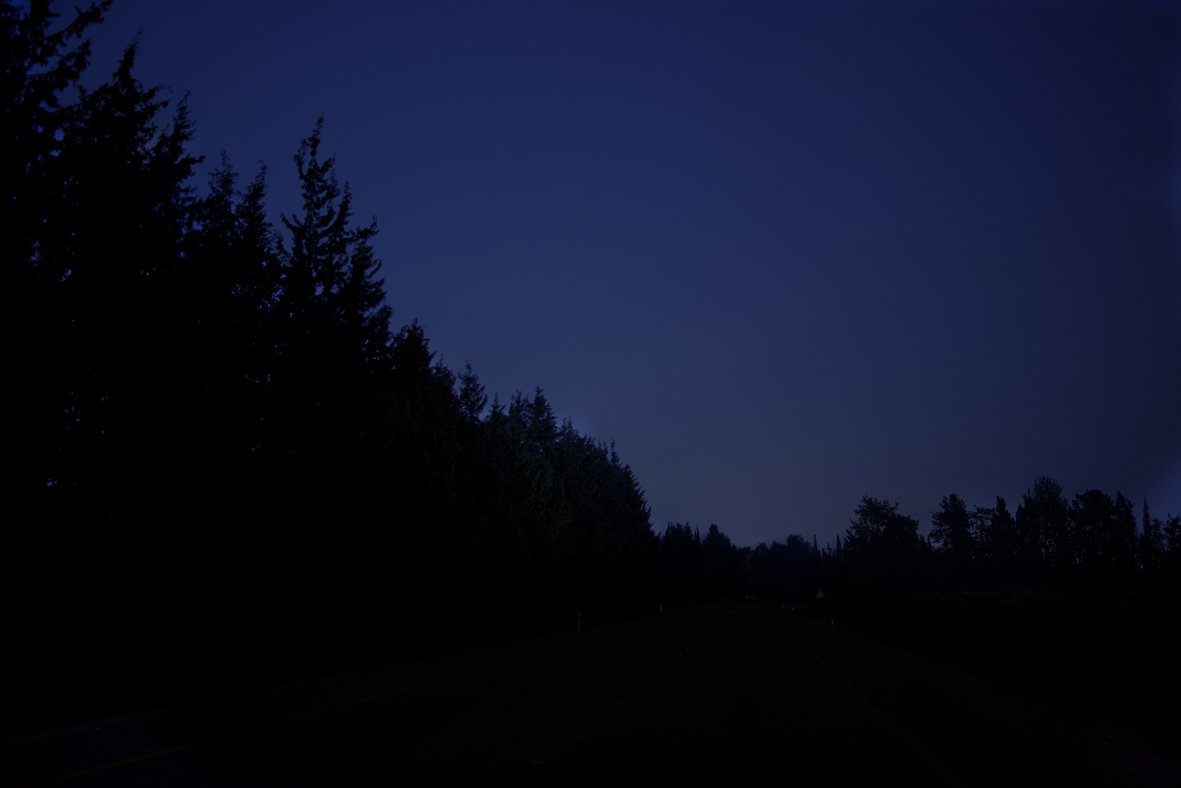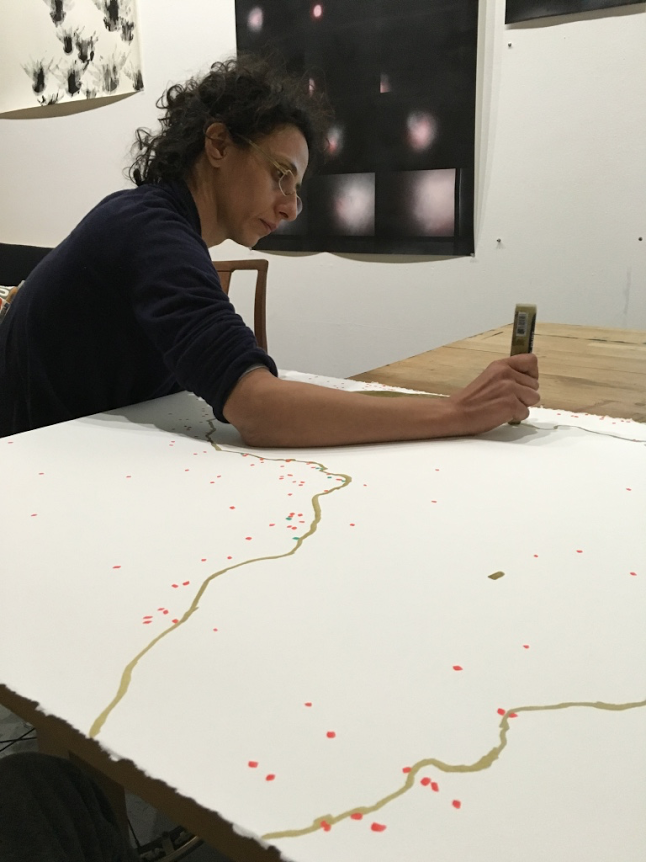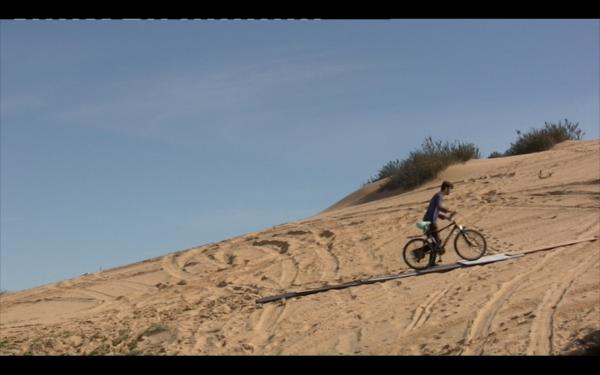Elham Rokni was born in Iran in 1980, where she lived for nine years before her family immigrated to Israel. Now based in Tel Aviv, she makes videos and works on paper that often touch on the immigrant experience and memories of a country she can’t return to because of her Israeli citizenship. Her work includes a video in which she remotely directs a friend in Tehran through her childhood neighborhood (Yousef Abad (2014), recently on view in a solo exhibition at the Tel Aviv Museum of Art), and Wedding (2015), a video centered on her parents' conflicting memories of their wedding date in pre-revolutionary Iran. One of Rokni's earlier pieces, Crossing the Dune (2010), a mesmerizing silent chronicle of a man methodically arranging wooden planks into a path for his bicycle to travel over a sand dune, is included in LACMA’s exhibition Islamic Art Now, Part 2: Contemporary Art of the Middle East.
I took a moment to interview Rokni about her work and the time she recently spent in Los Angeles.
What was the inspiration behind Crossing the Dune?
One day I went to the beach with some friends and they put a bunch of wooden boards on the sand for me so that I could move easily with my wheelchair. It ended up being even harder to move on the boards than on the sand. I think there are many ridiculous and not-logical situations we put ourselves in by trying to solve problems.
Can you tell us about the process of filming this piece?
I displaced the situation from its original space and context and filmed Crossing the Dune at a dune in Ashdod—a city in the south of Israel where my parents live. The displacement made it an even more obscure and weird situation.

You were recently featured in a solo exhibition at Shulamit Nazarian gallery, in L.A., where you showed a piece called Clavileño. What are the thematic parallels between these two artworks?
Yes, both Clavileño and Crossing the Dune were made during the same period in 2010. At the time, I was interested in situations between the possible and the impossible—situations that contain an equal chance of success and failure, action and collapse. I think that failure in these cases was also considered a success to me, as it would have reaffirmed a physical natural law.
I took situations I witnessed or experienced, mostly in urban spaces, and reconstructed and re-enacted them in peripheral space.

To complete your L.A. trifecta, you also participated in a two-month residency at the 18th Street Arts Center, where you produced a project called Once Upon a Time, Movement. How did your time in Los Angeles affect the final outcome of this work?
Once Upon a Time, Movement is a project in many mediums that focuses on migration of people, commodities, and ideas in the form of a folktale. During the residency, I worked on drawings for one part of the project, a folktale book. I’m gathering oral folktales from Eritrean and Sudanese refugees in Israel in their mother tongue and translating them to English and Hebrew. I also started filming some relatives who live in L.A., mostly interviewing them about their immigration and memory.
Islamic Art Now, Part 2: Contemporary Art of the Middle East is ongoing in the Ahmanson Building, Level 4.



